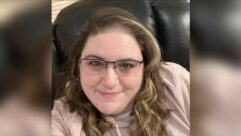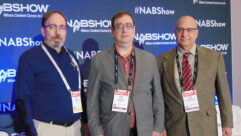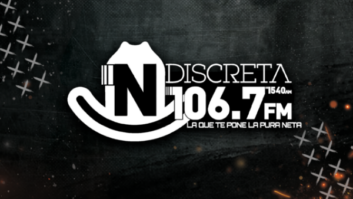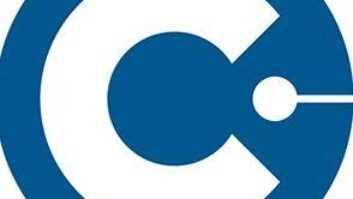Oct. 9, 2010, marked the first anniversary of Engineers for the Integrity of Broadcast Auxiliary Services Spectrum. In the 12 months since its founding, EIBASS made 27 filings with the FCC, all involving BAS spectrum issues.
The group also sent a letter to Sen. Olympia Snowe, R-Maine, regarding an initiative for engineers to play a higher-level role at the FCC. As of mid-October Snowe’s bill, S.2881, had not yet passed the Senate, nor had its House companion measure; time was running out on the legislative calendar for activity in this session of Congress.
EIBASS expects to continue its filings on BAS-related issues, and to continue to lobby for an engineering commissioner. We believe that having just an engineering advisor for each FCC commissioner would not go far enough to ensure that commission regulations do not attempt to trump the laws of physics, which is always a losing proposition.
While EIBASS does not oppose the S.2881 proposal regarding engineering advisors for each FCC commissioner, the ultimate goal should be at least one commissioner with his or her own technical background based on an engineering degree [Radio World, March 1, “New BAS Group Thinks Big”].
BAS flexibility
The current EIBASS effort involves comments to WT Docket 10-153, “BAS Flexibility.”
This rulemaking is likely to have an even bigger impact on Part 74 operations than the 2001 ET Docket 01-75 rulemaking, which updated and, where possible, harmonized the Part 74 TV BAS rules with the Part 101 Private Operational Fixed Service rules.
The ET 01-75 rulemaking allowed the routine use of digital modulation for aural and TV BAS links, and made frequency coordination for the 950 MHz aural BAS band, and the 7 and 13 GHz TV BAS bands, subject to the Section 101.103(d) prior coordination notice protocols.

The BAS flexibility rulemaking proposes to open the 7 and 13 GHz TV BAS bands to Private Operational Fixed Service, and in exchange, removing the restriction that a below-23 GHz POFS link cannot be the last link to a broadcast station.
WT 10-153 also includes the proposal by Wireless Strategies Incorporated for “microwave white spaces,” also referred to as “concurrent coordination.” This proposal first surfaced as a WSI request for declaratory ruling, and was assigned ET Docket number 07-121. In EIBASS’ view, the WSI proposal is the equivalent of cold fusion for microwave spectrum, and the most dangerous part of the WT 10-153 rulemaking.
RPU issues
Of course, EIBASS does not limit its filings just to TV BAS issues.
EIBASS has filed comments to WT Docket 99-87 regarding the deadline for narrow banding of remote pickup (RPU) channels, and to IB Docket 04-286, an International Bureau rulemaking to establish the U.S. position on various radio spectrum issues for the upcoming 2012 World Radio Conference.
IB 04-286 includes a proposal to allow fixed Maritime Coastal Stations at 161.500–161.950 MHz, which would be co-channel to Part 74, Subpart D, Remote Pickup stations at 161.625–161.775 MHz. This could be a serious problem for 161 MHz RPU operations in radio and TV markets with port operations, such as New York City, Los Angeles, San Diego, San Francisco and Seattle.
Finally, EIBASS has filed a series of ex parte comments regarding Medical Micropower Network Service (MMNS) devices at 413–457 MHz. That portion of this proposed service would be co-channel to 455–456 MHz RPU operations.
This has the potential to create the same boondoggle that ended up requiring new DTV stations to conduct a survey of all health care facilities in their area, to ensure that the new DTV channel wasn’t being used by unprotected, bottom-of-the-RF food chain medical telemetry devices. Because this imprudent use of a Part 15 device involved a potential health safety issue (medical telemetry for CCU/ICU patients), the holders of DTV construction permits had to bear the cost of the surveys, and in some cases delay construction of their primary DTV facility.
The lesson of not using an unprotected Part 15 device for a critical medical function unfortunately was not learned, and so EIBASS has made multiple ex parte filings to rebut what it believes are inaccurate claims by the MMNS proponent.
EIBASS website
Thanks to the hard work of group member Gerry Dalton, EIBASS established its own website, www.eibass.org. Posted there are all our filings; we expect the list to continue to grow at the same pace in 2011 and onward. EIBASS’ goal is to have its site be the “go to” resource for BAS stakeholders.
This article reflects the views of the author and EIBASS, and does not necessarily reflect the views of his employer. Radio World welcomes other points of view.
Dane Ericksen, P.E., CSRTE, 8-VSB, CBNT, served 18 years on the SBE board and has been on the society’s Certification Committee since 1987. He chaired the ATSC TSG S3 Specialist Group on Digital ENG from 2004 to the sunsetting of S3 in 2009, after completing work on the ATSC A/82 DRL standard. He has been with Hammett & Edison Inc., Consulting Engineers, since 1982, and also worked as an FCC engineer based in San Francisco.












